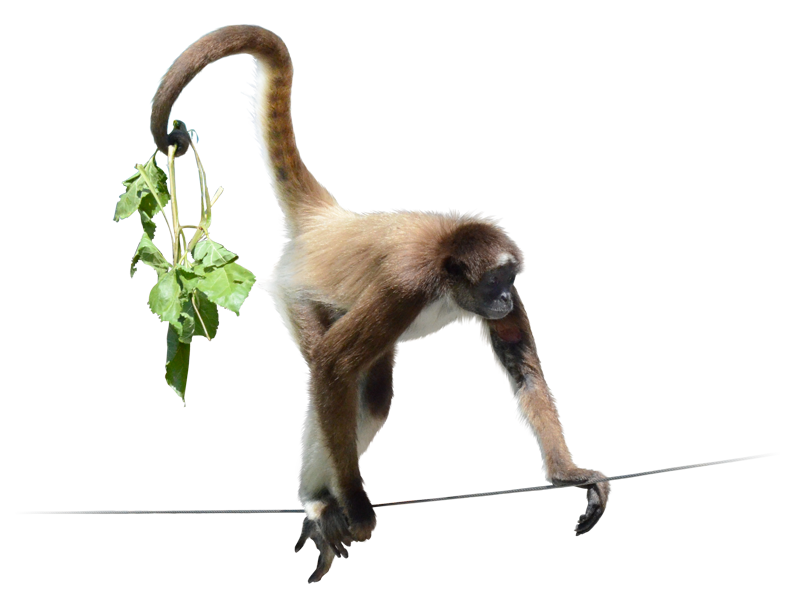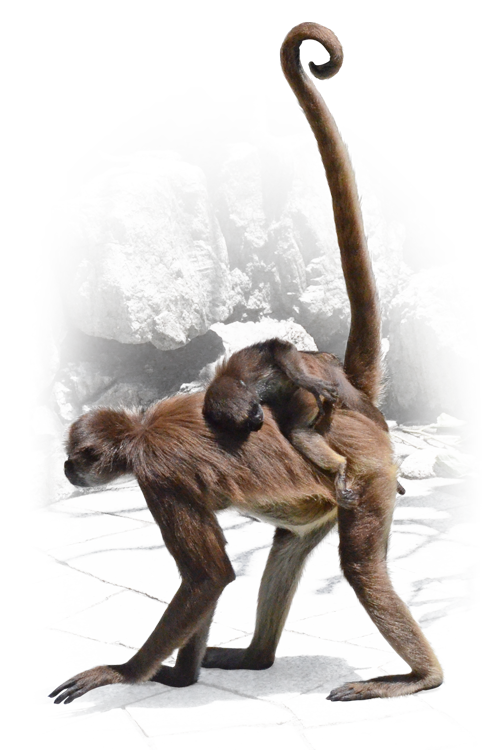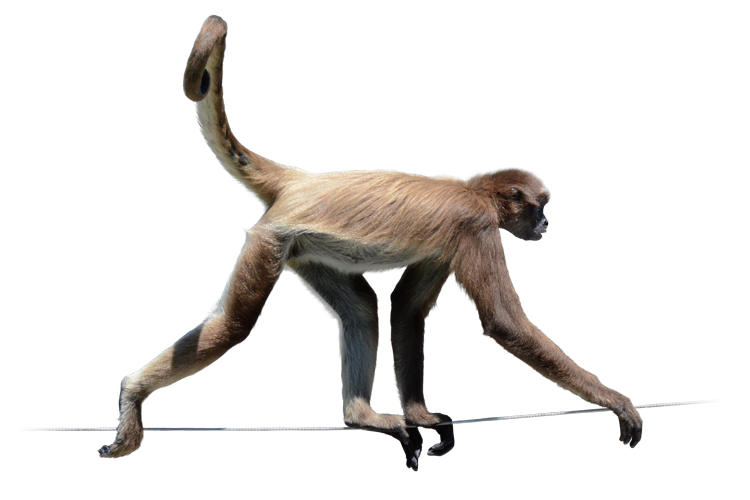
Ateles hybridus (I. Geoffroy, 1829)
新世界のサルはどこからやってきたのか?
Where Did the New World Monkeys Come From?
平均体長50cm、尾長約70cm、体重7.5 – 9kg。南米のコロンビア北部やベネズエラ西部の熱帯雨林に生息するクモザルです。手足が長く、さらに長い尾は木にぶら下がったり、食料などを持ったりと手足のように器用に使うことができます。明るい茶色の毛で覆われていて、目の周りは仮面をつけているように黒いのが特徴です。
本種を新種として記名したのはフランスの動物学者イジドール・ジョフロワ・サン=ティレールです。彼の父は博物学者エティエンヌ・ジョフロワ・サンティレールであり、1830年に博物学者のジョルジュ・キュヴィエと「アカデミー論争」を繰り広げたことで知られています。この論争は動物の構造を決定する要因が機能(キュヴィエ)なのか形態(ジョフロワ)なのかという根本的な問いを巡る論争であり、これらの論争を経て、ラマルクやダーウィンの進化論へと引き継がれていきます。ちなみに父ジェフロワの功績に敬意をあらわし命名されたのが本種に近縁なジェフロイクモザルです。
さて、中南米に生息するサル(新世界サル)は広鼻小目に分類されます。広鼻小目の歴史はおよそ2,600万年前に突然始まり、それよりも古い霊長類の化石は見つかっていません。つまり彼らはどこかから移住してきたと考えられます。有力な説はアフリカから流木や浮島を舟として海流に乗って渡ってきた、という説です。当時のアフリカと南アメリカの距離は現在よりもずっと近く、海流はアフリカから南アメリカの方向に流れていたので、可能だったと考えられます。
苦労して渡ってきたにも関わらず、現在、広鼻小目の多くは絶滅の危機にさらされています。森林の減少と乱獲などが主な原因です。本種はIUCNによる評価ではCR(深刻な危機)になっており今後45年間で個体数は80%減少すると予測されています。個体数減少に関与しているのは言わずもがな、霊長類として最も進化したヒトの存在です。
Average body length 50cm, tail length about 70cm, weight 7.5-9kg. Spider monkeys live in the tropical rainforests of northern Colombia and western Venezuela in South America. They have long limbs and even longer tails that they can use dexterously like limbs to hang from trees or hold food. They are covered in light brown fur and have black around the eyes as if they are wearing a mask.
The French zoologist Isidore Geoffroy Saint-Hilaire was the one who recorded this species as a new species. His father was the naturalist Étienne Geoffroy Saint-Hilaire, who is known for having engaged in the “Academy Controversy” with the naturalist Georges Cuvier in 1830. This debate was about the fundamental question of whether the factor that determines the structure of an animal is function (Cuvier) or form (Geoffroy), and it was through these debates that the theory of evolution of Lamarck and Darwin was inherited. By the way, the closely related species, Geoffroy’s Spider Monkey, was named in honor of his father Geoffroy’s achievements.
Now, monkeys that live in Central and South America (New World monkeys) are classified as Platyrrhines. The history of Platyrrhines began suddenly about 26 million years ago, and no primate fossils older than that have been found. This means that they are thought to have migrated from somewhere. The leading theory is that they crossed from Africa on ocean currents using driftwood or floating islands as boats. This was possible because the distance between Africa and South America at that time was much closer than it is today, and the ocean currents flowed from Africa to South America.
Despite their difficult migration, many Platyrrhines are now at risk of extinction. The main causes are deforestation and overfishing. The IUCN has assessed this species as Critically Endangered, and the population is predicted to decrease by 80% over the next 45 years. Needless to say, the cause of the population decline is the existence of humans, the most evolved primates.
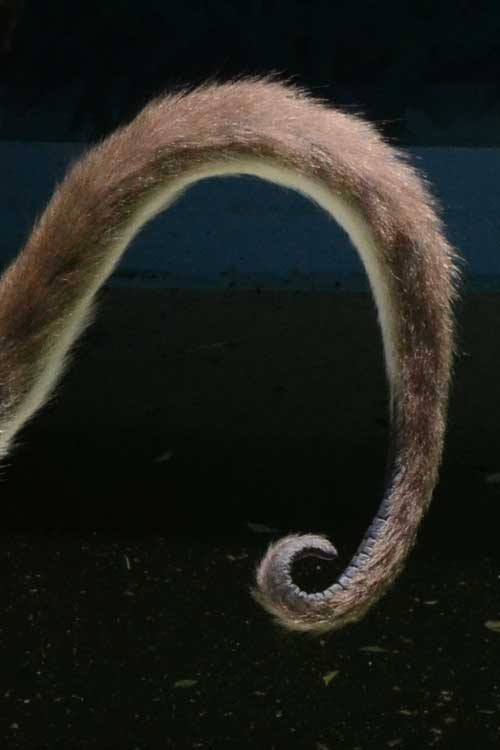
The pad at the end of the tail allows it to grasp anything.
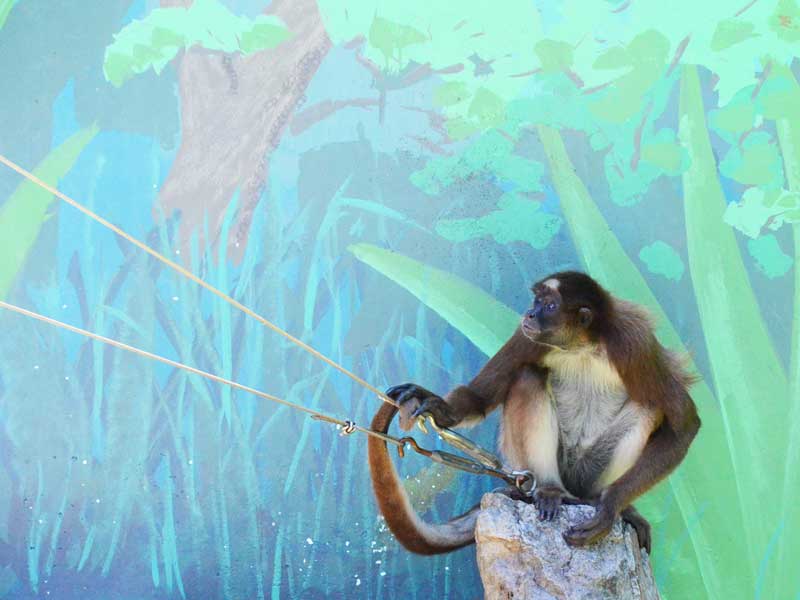
New World monkeys are thought to have come from Africa
参考文献
“Ateles hybridusbrown spider monkey” Animal Diversity Web. 2025年7月20日閲覧
科学バー | 僕たちの祖先をめぐる15億年の旅 | 第4話 マーモセットとヒトの共通祖先 | 長谷川 政美 2025年7月20日閲覧
科学バー | 進化の歴史ー時間と空間が織りなす生き物のタペストリー| 第16話 漂流する大陸と生物の進化 | 長谷川 政美 2025年7月20日閲覧
